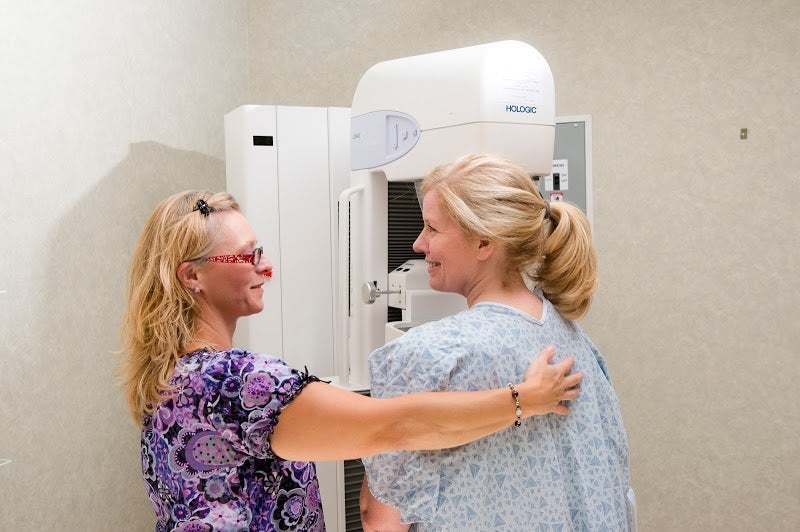Ultrasounds
At Garnet Health, we offer ultrasound services at our locations in Middletown and Harris, NY.
Location Search Access Test Results in MyChartBody
Ultrasounds at Garnet Health
An ultrasound (sometimes refered to as a sonogram) is a non-invasive, non-radiation examination that uses high-frequency sound waves to capture live images from the inside of your body. An ultrasound will allow your doctor to see and analyze your organs, vessels, and tissues without any incision or invasive procedure.
Your doctor may refer you to an ultrasound scan for many reasons, as this technique can be used to effectively analyze many areas of your body. One of the most common uses of an ultrasound is to monitor the growth of an unborn child during pregnancy. It is also often used if you are experiencing symptoms like pain or swelling in certain areas that will require an internal view of your organs, such as your:
- Bladder
- Kidneys
- Liver
- Ovaries and uterus
- Pancreas
- Thyroid
- Blood vessels
In these and many other areas, an ultrasound can be used to detect signs of disease and locate possible abnormalities.
Garnet Health’s ultrasound systems are designed to provide doctors with more precise ultrasound images for easier, more efficient diagnosis of serious health problems. The system performs highly complex scanning techniques, such as high-resolution panoramic imaging or 3D scanning, all in real time. At Garnet Health, certified and highly skilled ultrasound technologists are supervised by a Board-certified radiologist.
Receiving Test Results
Once images are taken, they are immediately available for review by your doctor through our secure Web viewer. Test results are delivered electronically via our GE IntegradWeb Picture Archive Computer System (PACS) to aid in fast diagnosis. To request a copy of your diagnostic imaging exam, call us at: 845-333-1222
You may also login to your MyChart account to view your results.
Preparing for Your Ultrasound Exam
Depending on what area of your body is being examined during your ultrasound, you may need to prepare differently. Please make sure to talk to your prescribing doctor or nurse about specific instructions you should follow to prepare for your exam. Some things your doctor may instruct you to do is fast, drink water, or hold your urine so your bladder is full for the exam.
Be sure you've discussed any prescription drugs or medications with your doctor before the exam.
During Your Ultrasound
Right before your ultrasound, you may be asked to change into a gown, You will likely lie down on a table with the section of your body exposed for the test, which the ultrasound technician will apply a special lubricating jelly to. This jelly prevents friction on your skin as the technician rubs the wand, or transducer, around your body to gain the appropriate image on the computer screen.
You may be asked to change positions during the exam in order to capture different areas or angles of the area needing to be analyzed. The whole procedure can last from less than 30 minutes to an hour depending on what and how many images are needed to be captured during the exam.
After Your Ultrasound Exam
After the ultrasound is complete, you will be able to carry on with your normal daily activities as there are no side-effects of this non-invasive examination. You doctor will review the images and call you or schedule a follow-up appointment to discuss the findings of the exam and next steps. Follow-up diagnostic tests or appropriate treatments may be prescribed.
Endoscopic Ultrasound (EUS) with FNA
Endoscopic Ultrasound (EUS) is a procedure that allows for diagnosis and staging of many cancers including lung, esophagus, stomach, pancreas, bile duct and rectum. In addition, EUS evaluates diseases of the lymph nodes of the chest, abdomen and pelvis, as well as masses in the liver.
EUS is a minimally invasive procedure that provides an extremely detailed ultrasound evaluation of the anatomy around the upper and lower GI tract. Fine Needle Aspiration (FNA) biopsy of lesions in the chest, abdomen and pelvis are also possible with this technology. This state-of-the-art advancement allows for rapid visual evaluation and diagnostic biopsies of primary tumors and metastatic disease to allow patients to confidently move forward with appropriate surgical, chemotherapeutic or radiation therapies. EUS/FNA complements, and in many cases replaces, previously used imaging studies and procedures that are either more invasive or less sensitive. Accurate staging diagnoses made by EUS/FNA are extremely critical in providing optimal cancer care.
Endobronchial Ultrasound
Endobronchial Ultrasound (EBUS) is a minimally invasive procedure designed to help surgeons and pulmonologists accurately stage lung cancers and diagnose other thoracic disorders. Garnet Health Medical Center introduced this innovative technology as part of our lung cancer program in 2011, enhancing our ability to stage cancer and provide an accurate treatment plan without an invasive incision.
This procedure utilizes a specialized bronchoscope that incorporates an ultrasound probe allowing the surgeon to visualize lymph nodes in the chest. A critical step in formulating a treatment plan for the patient is determining whether these lymph nodes contain cancer cells. The scope has a transbronchial needle that is passed through the wall of the airway guided by the ultrasound image to obtain tissues samples of the target lymph nodes. A pathologist accompanies the surgeon in the operating room to provide an instant and accurate assessment of the tissue samples.
This procedure replaces mediastinoscopy, which is also performed to biopsy these lymph nodes, however it requires a small incision at the base of the neck to insert a scope.
In addition diagnosis and staging of lung cancer with this procedure, other disorders, such as lymphoma and sarcodosis, can be easily detected in the chest without the need for an incision.
Additional Resources
Locations
Garnet Health Medical Center - Catskills, Harris Campus
68 Harris Bushville Road
Harris, NY 12742
Ray W. Moody, M.D. Breast Center at Garnet Health Medical Center
707 East Main Street
Middletown, NY 10940


